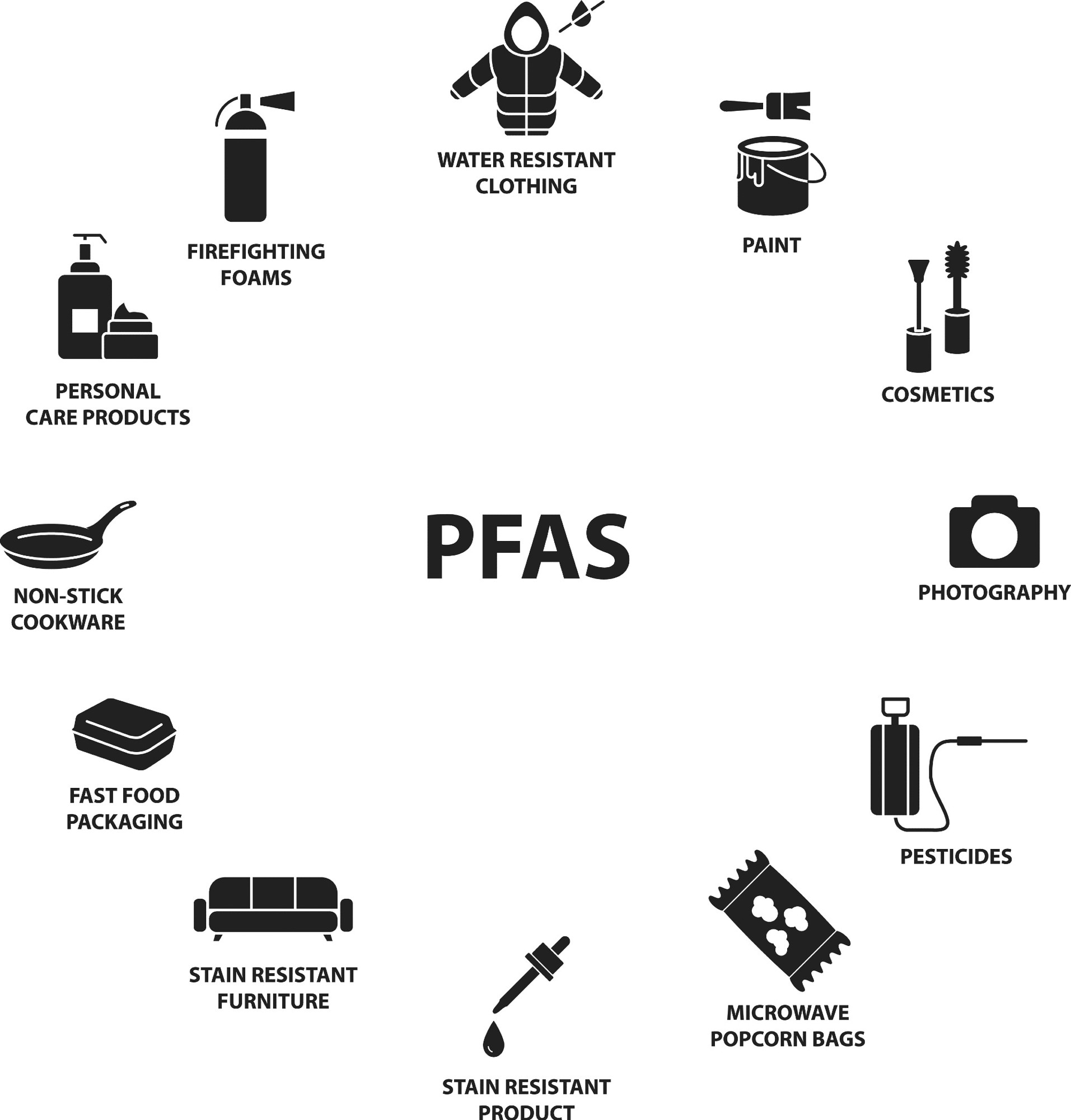Forever chemicals refer to a group of chemicals that are potentially harmful human-made substances that can be found in almost every environment across the planet.

Image Credit: Vector street/Shutterstock.com
Known as persistent organic pollutants (POPs), forever chemicals include several classes of synthetic substances such as dioxins (CDD), polychlorinated biphenyls (PCBs), organochlorine pesticides like DDT and perfluoroalkyl substances (PFAs).
PFAs have been identified as posing a serious environmental concern as they are almost ubiquitous and can be found in everyday items such as cleaning products, food packaging, paints, and textiles. Other POPs also pose a health risk, but PCBs and DDTs only have a half-life of up to 15 years, whereas PFAs can linger in the environment for up to 100 years.
Now, an Open Access eBook published by UC Davis outlines and identifies key research areas and the effects of PFAs and other POPs on the environment and human and animal health.
In the eBook, the researchers state, “Environmental surveys have identified PFAS in every environmental matrix that has been examined, as well as in food and water supplies of hundreds of millions of people worldwide.”
Silent Spring and The Stockholm Convention
The concern surrounding forever chemicals first entered the public domain with the publication of Rachel Carson’s groundbreaking environmental science book, Silent Spring. Within the publication, Carson outlines how everyday chemicals, such as DDTs, found in insecticides do not only end up in the environment but also in the food chain.
Yet, it was not until 1979 that action against POPs was first taken after the US imposed a ban on PCBs. Decades after Carson’s book and the mass production of POPs, heavier restrictions on forever chemicals came into force with the UN’s Stockholm Convention.
The Stockholm Convention, aimed at protecting human health and the environment by monitoring and regulating POPs, was first published in 2001 and enforced in 2004. Yet only recently did PFAs appear on this list. The UN continues to revise and update the text of the convention, with the most recent revision being in 2019.
The Toxic Legacy of PFAs
As of today, PFAs have been found in almost every environmental matrix, with significant levels of research identifying the detection of PFAS in humans and hundreds of wildlife species, including domestic and agricultural animals.
PFAs are able to enter the food chain and have been found to be concentrated further up, as they have even been observed in Apex predators. Likewise, PFAS found in the human population eclipses PFA concentrations in contaminated food and water supplies.
This toxic legacy of PFAs is due to the fact they are able to enter into human and animal species through inhalation, ingestion and even skin exposure to these forever chemicals. Already found in everyday items, PFAs are now even being identified in our drinking water supply, which is a major cause for concern as the burden on the human body includes altered immune and thyroid function, liver and kidney diseases, adverse impact on reproductive systems, and cancer.
Active Research Areas
Today, several active research areas are focused on identifying molecular mechanisms by which PFAS cause toxicity and the adverse effects they cause to human and animal health.
There are currently two major hypotheses as to how PFAS disrupt normal biological functions: (1) by modulating normal signaling through the peroxisome proliferator-activator receptor-ɑ (PPARɑ); and (2) via PPARɑ-independent mechanisms. PPARɑ is a nuclear receptor that regulates gene expression and functions as a central regulator of lipid metabolism.
UC Davis Researchers
With the presence of PFAs in the environment and resulting contamination considered a global toxicological crisis, reducing the levels of PFAs is crucial to protecting human and animal welfare.
This will require a coordinated effort from regulators and researchers alike with a focus on restricting the future introduction of novel PFAS species, in combination with innovative strategies to eliminate PFAS from environmental matrices.
References and Further Reading
Pfas: The "new" Forever chemicals (2023) Open Access Government. Available at: https://www.openaccessgovernment.org/pfas-forever-chemicals-perfluoroalkyl-toxicology/155899
Disclaimer: The views expressed here are those of the author expressed in their private capacity and do not necessarily represent the views of AZoM.com Limited T/A AZoNetwork the owner and operator of this website. This disclaimer forms part of the Terms and conditions of use of this website.